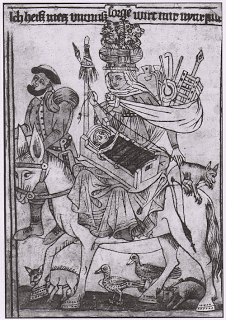I read about the very special helmet in Parzival, and now I'm wondering about it.
Gahmuret comes by a helmet of "adamas" ("dô schouwet er den adamas: daz was ein helm"). I have the middle high german - modern German version by Reclam, and the translation of "adamas" there is always "diamond".
In
Lexer's dictionary, "adamas" is translated as a gemstone, especially diamond, but might also mean a magnet. Originally, the word seems to come from greek
αδάμας,
adámas, „impregnable“ (says German Wikipedia, sounding plausible enough for me). Which would mean a very hard thing - a very hard stone, in our modern interpretation of "diamond".
Now when I hear "diamond", my association is a small, sparkly, clear, expensive gemstone. Usually set in a ring of some sort. Not suitable for making into a helmet. At all. And I'm wondering about the associations expected from the medieval reader when hearing "adamas" and "helmet" in one breath.
Was the word so firmly linked to the one special gemstone? Lexer mentioning magnets suggests it was not so. And "adamas" is not so far removed, sound-wise, from "damasch" which would mean
damascus steel (and that material, also called wootz, was a very good steel, and extremely hard).
On the other hand, making a helmet out of gemstones would not have been very practical - and making it out of real diamond more or less impossible. How far from reality would the author of such a story want to go? Is the audience expected to think of the helmet as an impossible fantasy, the invincible helmet of sparkling stone? A sparkle or even a strong gleam, however, is never mentioned in context with the helmet - though it is at length described when Wolfram talks about a garment made of gold cloth. Maybe "adamas" in this context was alluding to, or even meaning, damascus steel? Perhaps the closeness of the two words for damascus steel and diamond were a delightful play on words for Wolfram von Eschenbach and his audience? It is delightful to my own personal taste, when reading "adamas" and thinking "damascus steel" (which is also a beautiful thing).
I am very glad I can wonder about this only for my own private pleasure, and I do not need to prove anything. But it tickles my brain in a very enjoyable way.
If you have thoughts about the possible interpretations of this helmet, please share them - I'd love to know what you think!




